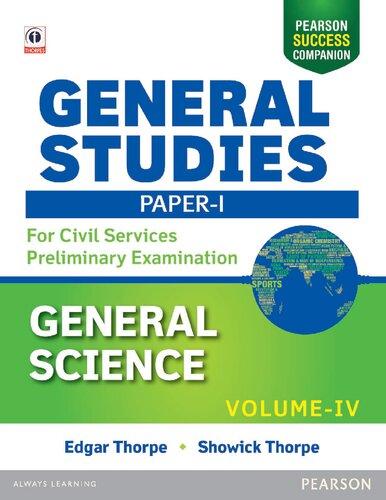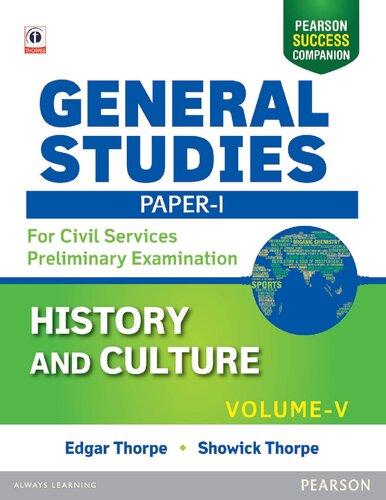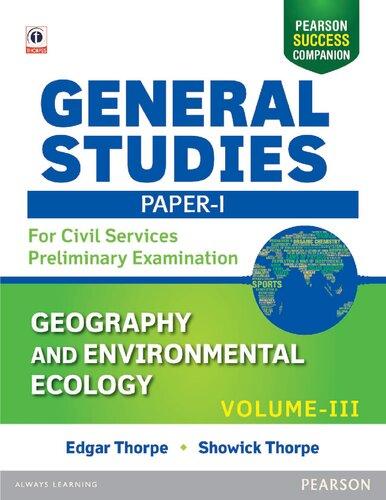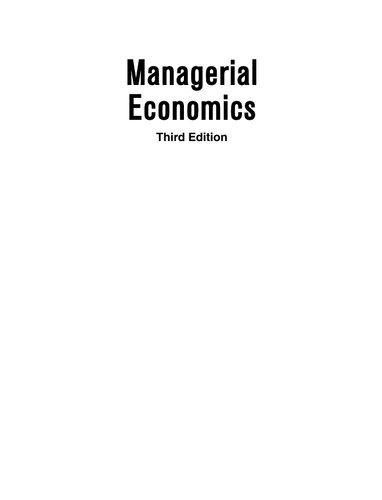ClAssifiCAtion
As we now know that there is enormous variety of living organisms. Biologists put them into groups, or classify them, according to their structure and function. Each group reflects similarities that have come about because the organisms in the group are related through their common ancestry. In other words, they are descended from the same ancestors by the process of evolution. The major groups of organisms are plants, animals, fungi, protista, bacteria and viruses.
linnAeus system of ClAssifiCAtion
Classification is grouping things together on the basis of certain features, and the science of classification is called taxonomy. Taxonomy has two branches—nomenclature (the naming of the organisms) and systematics (the placing of organisms together).
In 1753, Carl Linnaeus (1707–1778), a Swedish naturalist, proposed an order-based system for the classification of the various organisms found on Earth. In that system of classification, which was based on binomial system, the finest unit of organisation of life is the species. Every organism, according to that system, could be classified with a unique binomial name. Each organism would have a generic name or the Genus (upper-cased first letter) followed by the specific name or the species (all letters lower cased) For example, the biological term
for humans is Homo sapiens. Here the genus is Homo and the species is sapiens. The term can be abbreviated as H. sapiens too. The Latin names are internationally agreed upon and avoid the confusion of local variations in common names.
Classi cation of Humans

It was Carolus (Carl) Linnaeus who classified humans as animals. According to him, humans along with monkeys and apes belonged to the taxonomic order Anthropomorpha, which he later renamed Primates. Linnaeus also recognised all humans as belonging to a common genus (Homo) and species (sapiens). In later editions of his book Systema Naturae, Linnaeus divided humans into four main sub-species: Homo sapiens americanus (Americans), Homo sapiens europaeus (Europeans), Homo sapiens asiaticus (Asians) and Homo sapiens afer (Africans). He, however, did not provide any systematic method for determining these divisions. Besides, he identified two other sub-species: Homo sapiens monstrosus (people with deformities, mythological giants and Hottentots of southern Africa) and Homo sapiens ferus (wild children found abandoned in forests). Interestingly, these taxonomic divisions in certain aspects later resembled racial characterisation. As he identified the Asian subspecies as melancholy, stiff and greedy, he chose to describe their European counterparts as gentle, optimistic and inventive. Therefore, it may be analysed that Linnaeus’s classification of humans was not based on scientific evidence and reflected his own European social prejudices.

modern ClAssifiCAtion systems
Linnaeus’ hypothesis served as the basis for the current classification systems. The modern classification systems comprise several levels of hierarchical organisation, which makes it more complicated. Structurally based on Darwin’s theory of evolution, these systems are taxonomic (answering structural and physiological connections between organisms) and phylogenic (classifications based on genetic connections between organisms). The modern classifications are standardised in a hierarchical system that go from general to specific.
other imPortAnt tyPes of ClAssifiCAtions
ArtifiCiAl ClAssifiCAtion Usually designed for practical purpose with an emphasis on convenience and simplicity, this category is based on one or a few easily observed characteristics.
Table 1.2 Linnaeus Classification
Classification Frog Dog Man
Phylum Chordata Chordata Chordata
Sub-phylum Vertebrata Vertebrata Vertebrata
Class Amphibia Mammalae Mammalae
Order Anura Carnivora Primate
Family Ranidae Canidae Hominidae
Genus Rana Canis Homo
Species Pipiens Familiaris Sapiens
nAturAl ClAssifiCAtion It considers more evidence than artificial classification, including internal as well as external features, and tries to use natural relationships between organisms.
Antibiotics
Antibiotics (Greek anti ‘against’, bios ‘life’) are chemical compounds used to kill or inhibit the growth of infectious organisms. Antibiotic refers to antibacterials, but as the term is loosely defined, these compounds are preferably specified as being antimalarials, antivirals or antiprotozoals. All antibiotics share the property of selective toxicity: more toxic to an invading organism than they are to an animal or human host. Penicillin is the most well-known antibiotic and has been used to fight diseases like syphilis, gonorrhoeae, tetanus and scarlet fever. Then, streptomycin has been used to combat tuberculosis. In the nineteenth century, French chemist Louis Pasteur became the maiden observer to discover that certain saprophytic bacteria could kill anthrax bacilli.
PhylogenetiC ClAssifiCAtion Based on evolutionary relationships, this system proposes that organisms belonging to the same groups have common ancestors. The phylogeny (evolutionary history) of a group can be shown by means of a family tree. Cladistics , a form of phylogenetic classification, is the most popular method for the classification of organisms.
PhenetiC ClAssifiCAtion If there is little or no fossil evidence, it can be difficult and even controversial, to establish evolutionary relationships. Phenetic classification, therefore, relies solely on observable characteristics, all of which are considered equally important.
numeriCAl tAxonomy It is a form of computer-assisted taxonomy.
the fiVe Kingdoms
Conventionally, all living organisms were classified under plant and animal kingdoms. Certain unicellular organisms like bacteria and fungi were earlier classified under the plant kingdom, but over the last few decades taxonomists have opposed this. As a result, there have been constant endeavours to reorganise the system of classification. Accordingly in 1969, R. H. Whittaker classified all living organisms into five main kingdoms: Monera (true-bacteria, blue–green algae), Protista (golden algae, yellow-green algae), Fungi (slime moulds, bread moulds, sac fungi), Plantae (plants) and Animalia (animals).
Bacteria in Disease
The role of bacteria in a disease (anthrax) was first proved by German bacteriologist Robert Koch in 1876 and was confirmed by Louis Pasteur. Koch meticulously developed techniques, used today in culturing bacteria, for study and set down rules still used for proving that a given infection is caused by particular bacteria, the pathogenic bacteria. These rules, called Koch’s postulates may be summarised as: The bacteria must be present in the infected tissue in every case of the infection; they must be isolated in pure culture on an artificial medium; inoculation of this culture into experimental animals must cause a similar disease and the organisms must be recovered from the infected tissue. About 10 years before Koch isolated anthrax, Joseph Lister virtually eliminated wound infections by soaking bandages in carbolic acid. This was the start of modern aseptic surgical techniques. Following Koch’s initial discovery, medical scientists raced to identify other pathogens. Pasteur, however, devoted himself to developing vaccines, materials made from specially treated organisms and inoculated into humans and other animals to develop immunity to a specific infectious disease. Studies of the response of the body’s defence mechanisms to bacteria later gave rise to the field of immunology. Immunology is, thus, inseparable from bacteriology, although, strictly speaking, it is a branch of medicine.

Table 1.3 Red Maple: Classification
Category Name Characteristics
Kingdom Plantae Organisms with rigid cell walls and those that possess chlorophyll
Sub-kingdom Embryophyta Plants forming embryos
Phylum Tracheophyta Vascular plants
Sub-phylum Pterophytina Large, conspicuous leaves, complex vascular system
Class Angiospermae Flowering plants, seed enclosed in ovary
Sub-class Dicotyledoneae Embryo with two seed leaves
Order Sapindales Soapberry order consisting of a number of trees and shrubs
Family Aceraceae Maple family
Genus Acer Maples and box elder
Species Rubrum Red Maple
Prokaryotes and Eukaryotes
All cellular organisms, as per Margulis and Schwartz, fall into the groups of Prokaryotes and Eukaryotes. In prokaryotes (‘pro’ before, ‘karyon’ nucleus), the DNA is not enclosed by nuclear membranes, but lies free in the cytoplasm. Therefore, the cell lacks true nuclei. The cells of eukaryotes (‘eu’ true), however, contain nuclei. Figure 1.1(a) shows some of the chief characteristics of all kingdoms and a five kingdom classification of living organisms. Viruses (as shown) have a very simple non-cellular structure and cannot exist independently of other organisms. Thus, they do not fit neatly into any classification. The eukaryotes have evolved from prokaryotes. Figure 1.1(b) shows the evolutionary relationships between the five kingdoms.
Prokaryotae
Prokaryotes! Bacteria and cyanobacteria (blue green bacteria), autotrophic or heterotrophic, motile or non-motile (Monera)
Eukaryotae
Protista Fungi
Organisms resembling the ancestors of plants, animals and fungi; include algae, protozoa, slime moulds Oomycodes (early fungi)
Predominantly unicellular
Photosynthetic bacteria
Prokaryotae (Monera)
Unicellular
1.1 Classification of Living Organisms
Heterotrophic, non-motile, food is digested outside the body and products of digestion absorbed
Photosynthetic Algae
Vi ruses (non-cellular)
Plants, autotrophic, non-motile Animals heterotrophic, motile, food is ingested (taken into the body) before digestion
Predominantly multicellular and derived from Protista (Protoctista)
Eukaryotes
Fungi
Multicellular
Living Organisms (a)
(b)
Plantae Animalia
Protista
Plantae
Animalia
FIG.
Classes: Pisces
1.2 Example of Hierarchy of Taxonomic Groups
Table 1.4 Major Difference between Prokaryotes and Eukaryotes
Feature Prokaryotes
Organisms Bacteria
Kingdom Monera
Form Mainly unicellular
Cell size
Average diameter: 0.5–10 µm
Cell division Mostly binary fission; no spindle
DNA location DNA is circular; lies free in cytoplasm (no true nucleus)
DNA form DNA is naked (not associated with proteins or RNA to form chromosomes)
Cell walls Rigid and contain polysaccharides with amino acids; murein is the main strengthening compound
Respiration Mesosomes in bacteria, except cytoplasmic membrane in blue-green
Photosynthesis No chloroplast; takes place on membranes that show no stacking
Nitrogen fixation
Some have the ability
Evolutionary origin 3.5 thousand million years ago
Organisms Bacteria
Kingdom Monera
Form Mainly unicellular
eukaryotes
Protista, fungi, plants and animals
Protista, Fungi, Plantae, Animalia
Mainly multicellular (except protista, many of which are unicellular)
10–100 µm; commonly 1,000–10,000 times bigger than prokaryotes cells
Mitosis, meiosis, or both; spindle form
DNA is linear; contained in a nucleus
DNA is associated with proteins and RNA to form chromosomes
Cell walls of green plants and fungi rigid and contain polysaccharides; cellulose is the main strengthening compound of plant walls and chitin (a polymer of N-acetylglucosamine residues) in fungal walls (none in animal cells)
Mitochondria for aerobic respiration
Chloroplasts containing membranes, which are usually stacked into lamellae or grana
None have the ability
1.2 thousand million years ago; evolved from prokaryotes
Protista, fungi, plants and animals
Protista, Fungi, Plantae, Animalia
Mainly multicellular (except protista, many of which are unicellular)
FIG.
Feature Prokaryotes
Cell size Average diameter: 0.5–10 µm
Cell division Mostly binary fission; no spindle
eukaryotes
10–100 µm; commonly 1,000–10,000 times bigger than prokaryotes cells
Mitosis, meiosis, or both; spindle form DNA location DNA is circular; lies free in cytoplasm (no true nucleus)
DNA is linear; contained in a nucleus DNA form DNA is naked (not associated with proteins or RNA to form chromosomes)
Cell walls Rigid and contain polysaccharides with amino acids; murein is the main strengthening compound
Lately, DNA and RNA sequence analysis demonstrated that there actually are two major groups of prokaryotes: the Bacteria and Archaea.
Bacteria
Having appeared about 3,500 million years ago, bacteria is one of the oldest and smallest group of organisms with cellular length ranging from 0.1 to 10 mm and possessing an average diameter of about 1 mm. Found in soil, dust, water, air, in and on plants and animals, most bacteria are enclosed by a tough protective layer called cell wall. Some species are enclosed by a capsule, a slimy layer making the wall resistant to destructive chemicals. All bacteria have a cell membrane, an elastic bag-like structure just inside the cell wall. Small molecules of food enter the cell through pores in this membrane, but larger molecules cannot pass through. Inside the membrane is cytoplasm, a jelly-like substance containing chemicals called enzymes, required for food breakdown and building cell parts. These cells also contain DNA, vital for growth, reproduction and other activities. It forms an area of the cytoplasm called nuclear body. Other parts of bacteria’s cell structure are mesosomes—unfoldings of cell surface membrane; ribosomes—sites for protein synthesis; pilus—numerous fine protein rods concerned with attachment to specific cells or surfaces; plasmids—small, self-replicating circles of extra DNA, processing a few genes that give extra survival and flagellum—the tail-like structure enabling movement of bacteria cells.
DNA is associated with proteins and RNA to form chromosomes
Cell walls of green plants and fungi are rigid and contain cellulose, which is the main strengthening compound of plant walls, and chitin in fungal walls (none in animal cells)
Chlamydia
The bacteria that cause various infectious diseases in humans and animals are called Chlamydia. It has three sub-species: Chlamydia trachomatis, Chlamydia pneumoniae and Chlamydia psittaci. The diseases caused by the trachomatis species perhaps are the most common chlamydia illnesses. One strain of C. trachomatis causes conjunctivitis, an eye infection marked by redness and swelling, sensitivity to light and pus discharge. A strain of fly borne C. trachomatis causes a severe form of conjunctivitis called trachoma.
historiCAl deVeloPment in BACteriology Bacteriology, the study of bacteria, is an important branch of microbiology. Dutch microscope-maker Antoni Van Leeuwenhoek was the first person who systematically studied bacteria in the seventeenth century. His work set the stage for later researchers including French biologist Louis Pasteur who showed that microbes did not arise from non-living matter and German scientist Robert Koch, who highlighted the fact that bacteria could cause diseases. In the nineteenth century, Russian soil scientist Sergi Winogradsky described important energy-yielding metabolic reactions in bacteria and discovered many anaerobic micro-organisms. But it was in the 1940s that American scientist Selmen Waksman discovered a wide range of soil bacteria that produce antibiotics. Bacteria were till then, else for photosynthetic cyanobacteria (a group of algae), considered as microscopic fungi (called Schizomycetes). The detailed study of its cell structure revealed that they consisted a fundamental group which was completely different from the other organisms. It was Copeland who gave them their own kingdom Mychota, in
the year 1956, which was later named Monera, Prokaryota or Bacteria. After a few years, in the 1960s, the idea was further defined and bacteria (which now include cyanobacteria) were identified as one of the two prime divisions of the living world, along with eukaryotes. It was believed that eukaryotes had evolved from bacteria and later from assemblies of bacteria.
Destruction of Bacteria

Most bacteria are usually destroyed at high temperature. The harmful species in milk can be killed by maintaining 62°C (143°F) temperature for 30 min, the process called as pasteurisation. However, flash pasteurisation is commonly in use nowadays where 71°C (160°F) temperature is maintained for 15 s. Most non-spore forming bacteria are destroyed by boiling water and can be killed by various disinfectants. Antiseptics, too, may be used to inhibit their growth. Among the most effective disinfectants are phenol (carbolic acid), chlorine gas (drinking water is treated with chlorine to render it safe), bichloride of mercury (and other mercury-containing compounds) and alcohol (in a 50–70 per cent solution). The above chemicals, however, are poisonous for humans if taken internally. Antibiotics, produced by living organisms (usually, bacteria and moulds), are used internally to control the growth of bacteria or destroying them; antimicrobial agents are natural or artificial chemicals having the same use.
Plasmids
Found in certain bacteria, plasmids are tiny pieces of DNA generally carrying non-essential bacterial genes. Some plasmids are resistant to antibiotics, the cause behind which remains yet to be known even as experts blame the overuse of antibiotics for the plasmids’ acquiring extra DNA-controlling resistance.
The advent of molecular synthesis, however, challenged this view. In 1977, Woese divided prokaryotes into two groups: Eubacteria and Archaebacteria. He argued each of these, along with eukaryotes, evolved separately, and in 1990, he emphasised on this by promoting them to domains, renamed as Bacteria, Archaea and Eucarya.
imPortAnCe of BACteriA
(a) Helpful bacteria Living in the intestines of human beings and animals, certain bacteria facilitate digestion and vitamin production. Bacteria found in soil and water plays an important role in the recycling of carbon, nitrogen, sulphur and other chemical elements used by living beings. Many of them help decompose dead organisms
Eubacteria and Archaea
Eubacteria (or true bacteria) and archaea (or archaebacteria) are two major groups differing mainly in basic genetic constitution and structures of some of their cellular components. Most eubacteria are harmless, or even beneficial, but some may cause diseases. They produce many of the antibiotics used in medicine. Escherichia coli, a common intestinal organism used in genetic engineering, is a eubacterium. Archaea or Archaebacteria are a group of one-celled organisms, many of which do not require oxygen or sunlight to live. Prior to their discovery, scientists divided all living organisms into prokaryotes (those lacking cellular nucleus), comprising, primarily bacteria and eukaryotes (organisms with a cellular nucleus) like fungi, plants and animals. Initially, archaea were grouped with bacteria, as they too lacked a well-defined nucleus. Spirochete bacteria, included within the kingdom Prokaryotae, are singlecelled organisms lacking a well-defined internal cellular organisation. The bacterium Leptospirilla ichterohemorrhagiae exhibits the spirochete or spiral structure characteristic of many of the 1,600 species of bacteria.

and animal waste into chemical elements while others help change chemical elements into forms usable by plants and animals. There are some nitrogen fixing bacteria which help in the nitrogen cycle by fixing atmospheric nitrogen present in soil and air. Bacteria also assists in fermentation, a chemical process by which alcoholic beverages, cheese, etc., are prepared. Sewage treatment plants use them to purify water while they also find their use in manufacturing of drugs.
(b) Harmful bacteria Only a small fraction of the thousands of bacteria species cause diseases in humans, by destroying healthy cells and preventing the body from functioning properly. While bacterial infection can be prevented by killing them at a certain temperature (as in sterilisation and pasteurisation), still if it does occur antibiotics may be used. However, overuse of antibiotics in recent years has enabled the development of strains of bacteria that are resistant to antibiotics, such as Mycobacterium tuberculosis, which causes tuberculosis. A list of bacterial diseases in humans is given below:
Use of Bacteria in Bio-Tiolets
The Indian Railways has used Bacteria in the Bio-Toilets fitted in new coaches. Railways has set the target to fit 17,000 bio-toilets in long-distance trains as part of its ‘Swachh Rail –Swachh Bharat’ programme, to be implemented in fiscal 2015–16. The bio-toilets are fitted underneath the lavatories and the human waste discharged into them is acted upon by a particular kind of bacteria. The bacteria convert it into noncorrosive neutral water.
Table 1.5
Type
List of Bacterial Diseases in Humans
bacterium
Bacillus Bacillus anthracis
Bacillus cereus
Clostridium botulinum
Bacillus Clostridium perfringens
Clostridium tetani
Corynebacteriumdiphtheriae
Escherichia coli
Klebsiellapneumoniae
Legionella pneumophila
Mycobacterium leprae
Mycobacterium tuberculosis
Salmonella spp
Salmonella typhi
Salmonella typhimurium
Shigelladysenteriae
Shigella spp.
Yersinia enterocolitica
Yersinia pestis
Yersinia pseudotuberculosis
Chlamydia Chlamydia trachomatis
Coccobacillus Bordetella pertussis
Brucella spp
Hemophilusinfluenzae
Hemophilus pertussis
Coccus Neisseria gonorrhoeae
Neisseria meningitidis
Staphylococcus aureus
Streptococcus pneumoniae
Streptococcus pyogenes
Streptococcus spp
Listeria Listeria monocytogenes
Mycoplasma Mycoplasma pneumoniae
Rickettsia Rickettsia prowazekii
Rickettsia rickettsii
Rickettsia typhi
Spirillus Campylobacter fetusjejuni
Spirillum minor
Spirochete Treponemapallidum
Vibrio Aeromonashydrophila
Plesiomonasshigelloides
Vibrio cholerae 01
Vibrio cholerae non-01
Vibrio parahemolyticus
Vibrio vulnificus
Disease
Anthrax
B. cereus food poisoning
Botulism
Clostridialmyonecrosis (gas gangrene)
Tetanus (lockjaw)
Diphtheria
Diarrhea
Bronchopneumonia
Legionnaire’s disease
Leprosy
Tuberculosis
Salmonella
Typhoid fever
Salmonella gastroenteritis
Bacillary dysentery
Shigellosis
Yersiniosis, gastroenteritis
Plague
Senteric lymphadenitis
Trachoma, rethritis, cervicitis, conjunctivitis
Pertussis (whooping cough)
Undulant fever
Meningitis, bacterial pneumonia
Pertussis (whooping cough)
Gonorrhea, pelvic inflammatory disease
Meningitis
Pneumonia, toxic shock syndrome, skin infections, meningitis
Pneumonia, ear infections, meningitis
Strep throat, rheumatic fever
Scarlet fever, puerperal fever
Listeriosis, perinatal septicemia, meningitis, encephalitis, intrauterine infections
Pneumonia
Epidemic typhus Brill-Zinsser disease (spread by lice)
Rocky Mountain spotted fever (spread by ticks)
Endemic typhus (murine typhus, spread by rat fleas)
Campylobacteriosis(bacterial diarrheal illness)
Ratbite fever
Syphilis
Gastroenteritis, septicemia, cellulitis, wound infections, urinary tract infections
Gastroenteritis, diarrhea
Epidemic cholera
Gastroenteritis
V. parahemolyticus-associated gastroenteritis
Wound infections, gastroenteritis, primary septicemia
reProduCtion in BACteriA The reproduction in bacteria is asexual, through binary fission or simple cell division. Here, one cell divides into two daughter cells with the development of a transverse cell wall. Notably, events such as mutation (random genetic change within a cell’s own genetic code) may lead to genetic variations within individual cells. A like other complex organisms, bacteria, too, have mechanisms for exchanging genetic material; the resulting bacterium is a combination of traits from two different parental cells. By the amalgam of genetic material, bacteria develop new traits, including ability to withstand acidity and high temperature and acquire resistance to antibiotics. Three different modes of exchange have thus far been identified in bacteria:
(a) Transformation Transfer of naked DNA from one bacterial cell to another in solution (this can include dead bacteria).
(b) Transductio n Transfer of viral, bacterial, or both bacterial and viral DNA from one cell to another via bacteriophage.
(c) Bacterial conjugation Transfer of DNA from one bacterial cell to another via a special protein structure called a conjugation pilus.
Symbiosis (Greek symbioum, ‘to live together’) looks into the interdependence of different species, which are sometimes called symbionts. The symbiosis resulting in mutual benefits to interdependent organisms is called mutualism. Example: Rhizobium, a nitrogen-fixer living in the root nodules of legumes such as pea and clover. Parasitism is a kind of relationship between organisms of different species in which one (the parasite) benefits from a prolonged, close association with the other (the host), which is harmed. In general, parasites are much smaller than their hosts, show a high degree of specialisation for their mode of life and reproduce more quickly and

in greater numbers than their hosts. Parasites that cause disease are called pathogens Commensalism, another type of symbiosis, defines the association between two different kinds of non-parasitic animals, called commensals. It is harmless to both and beneficial to one of the two organisms. The association of colour bacteria with humans and other animals, especially plant-eaters, is also a type of commensalism.
After acquiring DNA from any of these events, bacteria can undergo fission and pass the recombined genome to new progeny cells. Many bacteria harbour plasmids that contain extrachromosomal DNA. Under favourable conditions, bacteria may form aggregates visible to naked eyes, such as bacterial mats
nutrition in BACteriA The species that feed on other organisms are heterotrophic bacteria while those manufacturing food themselves are autotrophic bacteria Then, certain bacteria have the traits of both autotrophic and heterotrophic, depending upon the food available. A majority of the heterotrophic bacteria feed on dead organisms, the species called as saprotroph, which along with fungi constitute the decomposers and are essential in bringing about decay and recycling of nutrients. Bacteria that use light to synthesise their organic requirements are called phototrophs and those that use chemical energy are called chemotrophs
Cyanobacteria
Cyanobacteria (or blue–green algae) is a photosynthetic bacteria containing chlorophyll. Classified under plant kingdom earlier, discoveries through electronic microscope and new biochemical techniques, however, showed them to
Cell wall
Single circular DNA molecule becomes attached to mesosome
Two identical daughter cells formed
Cell surface membrane
Point of attachment of DNA to cell surface membrane: this is sometimes a mesosomes
DNA starts to replicate in both directions as indicated by small arrow inside the cell
DNA replication complete and second DNA molecule becomes attached to mesosome
Growth of new cell wall (shown as black) and membrane separate the DNA molecules
New cell wall and membrane grow between DNA molecule
FIG. 1.4 Binary Fission in a Bacterium, E. coli
be prokaryotes, more similar to bacteria than plants. Now, they are placed under kingdom Monera. Cyanobacteria are familiar to many as a component of pond scum. Nitrogen-fixing cyanobacteria only require nitrogen and carbon dioxide to survive. They use two photosystems, which split water and yield oxygen; lack flagella; can be single, colonial or multicellular; are usually present in water that has been polluted, often with phosphates and nitrates and often explode in ‘algal blooms’.
Viruses
Viruses are the smallest living organisms, but without a cellular structure. They have a simple structure, consisting of a small piece of nucleic acid, either DNA or RNA, surrounded by a protein or lipoprotein coat. They can reproduce by invading living cells, therefore, are all parasitic. While outside a host cell they are inert, inside they enter a dynamic phase in which they replicate, pirating the host cell’s enzymes, nucleic and amino acids and machinery to accomplish what they are not equipped to do alone. Viral replication is often carried out at the expense of the host. Diseases such as herpes, rabies, influenza, some cancers, poliomyelitis and yellow fever are of viral origin. Although there are millions of different types of virus, approximately 250 cause diseases (over 100 of which cause the common cold) and 100 infect animals.
Unconventional Viruses
Viroids: Consisting solely of a small, circular molecule of RNA, viroids are particles known to cause diseases in plants such as potato, tomato, cucumber, avocado, coconut and chrysanthemum. Cadang-cadang (a viroid disease) has severely affected the coconut palm industry.
Prions: Prions, the infectious agents that cause a slew of degenerative neurological diseases, including scrapie in goats and sheep, and kuru and Creutzfeldt-Jakob in humans, attach themselves to the normal form of the protein, thereby causing a change in its shape to the disease-causing form. So far, prions are identified as a form of protein, sans the nucleic acid.
Discovery of Viruses
It was in 1898 that Beijerink, a Dutchman, for the first time described the infectious nature of certain plant fluids as ‘virus’. Later, viruses were found to be the smallest living organisms, their size ranging from 20 to 300 nm, and about 50 times smaller than bacteria. They cannot be seen with a light microscope and pass through filters that retain bacteria.
Structure of Viruses
The structure of viruses comprises:
(a) Core The genetic material, either DNA or RNA, which may be single stranded or double stranded.
(b) Capsid A protective coat of protein surrounding the core.
(c) Nucleocapsid The combined structure formed by the core and capsid.
(d) Envelope A few viruses, such as HIV and influenza viruses, have an additional lipoprotein layer around the capsid, derived from the cell surface membrane of the host cell.
(e) Capsomers Capsids are often built up of identical repeating subunits called capsomers.
Life Cycle of a Virus
The life cycle is, in principle, the same for all phages Phages or bacteriophages are a group of viruses that attack bacteria. While some phages complete life cycle without a break (the process called lytic cycles), others (like lamdaphage) insert their DNA into that of the host and remain dormant over several generations. Each time the host cell divides the phage, DNA is copied with the host cell DNA. This dormant stage of the phage is called the prophage Eventually, it is activated again and completes its life cycle, causing death of the host cell in the usual way. Such phages are described as lysogenic.
The AIDS Virus
AIDS is caused by HIV, which primarily attacks T4 lymphocytes, an important part of the human immune system. As a result, the body’s ability to resist opportunistic bacterial, viral, fungal, protozoal and other infection weakens considerably. The virus is transmitted sexually, through contact with contaminated blood, tissue or needles and from mother to child during pregnancy or breast feeding. Full-blown symptoms of AIDS may not develop even for over 10 years after infection. Pneumocystis carinii pneumonia is a leading cause of death among people with HIV infection. But, incidence of other kinds of cancers such as B-cell lymphomas and Laposi’s sarcoma is also seen. Neurological complications and dramatic weight loss are characteristics of AIDS.
The Nature of HIV Virus
HIV is an RNA retrovirus, which when viewed under an electron microscope shows a dense cylindrical core that encases two molecules of viral RNA genetic material. The core is surrounded by a spherical outer envelope. HIV contains reverse transcriptase, a special enzyme, which has the ability to make a DNA copy of the viral RNA. This enables the virus to reverse the normal flow of genetic information and to incorporate its viral genes into the genetic material of its host. The virus may then remain in a latent form for a lengthy period until it is reactivated. A critical step in HIV infection is binding of the virus to the receptor of the cell it attacks, thereby enabling its entrance. A molecule called CD4, found on the surface of the T4 cell, serves as the receptor and almost any other cell with CD4 surface molecule can become infected with HIV.
Bacteriophages (or Phages)
Viruses that attack bacteria form a group called bacteriophages, or simply phages. Some of these have a distinct icosahedral head, with a tail showing helical symmetry. (T2 phage with envelope, single-stranded DNA, bacterium-infected, with icosahedral head and helical tail. Its tail fibres released prior to infection.)
Kingdom ProtistA
Kingdom Protista consists of unicellular or colonial eukaryotes with diverse nutritional habits and reproduces, both sexually and asexually, through meiosis and nuclear fusion, respectively. Those interested in evolution find the group fascinating, as its organisms are the link between prokaryotes and the modern eukaryotes like plants and animals. A wide variety of protista organisms exist, inhabiting in different environments like freshwater, seawater, soils and intestines of animals (where they perform crucial digestive processes). Varying in size and shape, protista prepare their own food through photosynthesis, and like animals, move around by using their own energy. However, cells organised into specialised tissues, which are found in plants and animals, are missing here. While green algae Narochlorum is only 0.1 mm long, Giant Kelps can grow up to 65 m. Then, some protists can form structures known as spores, which are resistant to chemicals, heat and drought, and disperse in the

Algae in Protista
Kingdom Protista includes seven phyla of algae, depending on the classification system followed. They are photosynthetic organisms and can be differentiated on the basis of accessory photosynthetic pigments, presence of a cell wall and the composition of the cell wall, if present. Accessory pigments that mask the green of the chlorophyll are responsible for the characteristic colours of many phyla.
Phylum Myxophyta, the slime moulds, resemble algae, but they are multicellular or multinucleated in all or most of their life cycle. They reproduce asexually by means of spores.
environment. They are identified as the infectious stage of organisms, which cause diseases in humans when ingested.
Structure of Protists
Most protists contain membrane-bounded organelles (cellular parts) called mitochondria, which break down complex molecules and, in the process, release chemical energy that powers the rest of the cell. In addition to mitochondria and nuclei, membrane-bound organelles called plastids, which perform photosynthesis, are found in the protist cell structure. A majority of protists reproduce asexually—cells simply grow and divide. However, sexual recombination—production of gametes and the merging of DNA from two individuals to form a zygote—has also been observed in some protists.
Kingdom fungi
Kingdom Fungi comprises of numerous moulds that grow on damp organic matter (such as bread, leather, decaying vegetation and dead fish) and unicellular yeasts that are abundant on sugary surfaces of the ripe fruits and many parasite plants. Though botanists classified fungi in the plant kingdom, biologists later considered it as a separate kingdom. Most fungi can be seen through naked eye and its study is called mycology (‘mykes’ mushrooms). They are sub-divided on the basis of mycelium morphology and mode of nutrition and reproduction.
Fungi constitute of filamentous tubes called hyphae In several species, perforated walls or septa divide the hyphae into cells containing one or two nuclei. Protoplasm flows through the opening in the septa to provide cells with nutrients, which are stored in the hyphal walls as glycogen. Hyphae elongate from the tip. The entire mass of hyphae is collectively called mycelium
Characteristics of Fungi (Kingdom Fungi)
■ The absence of chlorophyll makes fungi non-photosynthetic; therefore, they resort to heterotrophic nutrition.
■ Can be mutualists, parasites or saprotrophs.
■ Digestion takes place outside the body and nutrients are absorbed directly.
■ Body is usually amycelium, a network of five tubular filaments called hyphae. These may be septate (have cross-walls, like Penicillium) or aseptate (no cross-walls, e.g. Mucor).
■ Rigid cell walls containing chitin as the fibrillar material. (Chitin is nitrogen-containing, polysaccharide, very similar in structure to cellulose with high tensile strength). It, therefore, gives shape to the hyphae and prevents osmotic bursting of cells.
■ If carbohydrate is stored, it is usually as glycogen and not starch. They reproduce by means of spores and are non-motile organisms.
Head
Collar
Sheath
Base plate
Mycorrhiza
Some mushrooms share a symbiotic relationship called mycorrhiza with higher plants. The fungal hyphae either penetrate into the root cells of certain trees or form a thick sheath
around the surface and outer cells of their rootlets, causing them to branch out and suppressing the normal development of root hairs. Such fungi obtain organic nutrients from the host plant and benefit it by providing certain needed chemicals, such as phosphate.
Mushroom Growth
The fruiting body of a soil-dwelling fungus is called mushroom. The fungus itself consists of a mycelium, which is a loose network of hyphae or fungal threads. When conditions are favourable, the hyphae form a dense, spherical mass that pushes up through the soil. Initially, the stalk and cap are joined by a thin and protective membrane but as the stalk grows the membrane ruptures to expose the spore-lined gills. Each mushroom releases millions of spores. The reproductive cycle in mushrooms is complex. They produce spores, which then undergo sexual reproduction under proper environmental conditions.
Mushrooms belong to phylum Basidiomycetes, named for the tiny, club-shaped structures called Basidia that these fungi use to produce spores. The basidia line the underside of a mushroom cap on their gills that radiate from mushroom’s centre.
(dikaryotic)
nuclei ( )n
Basidia (dikaryotic)
FERTILISATION ) (n+ n
Gills lined with basidia
nuclei (2 )n
n
Haploid basidiospores ( )n
Strain (–) (+) (+) Strain
Germination of basidiospores
Edible and Inedible Mushrooms
Though a wide range of mushrooms are edible, only a few species are delicious. Others, if edible, are tough or of unremarkable flavour. Some can produce varying degrees of illness while a species called toadstools are deadly poisonous. All species resemble so much that it is difficult for even expert mushroom gatherers to distinguish between edible and poisonous species. The most edible species include sponge mushrooms (or morels), inky caps and shaggymanes of genus Coprinus. Then, there are mushrooms that are hallucinogens, such as poisonous Amanita muscaria, species of Boletus and Psylocybe species, used for inducing hallucinations during ritual ceremonies by some groups of Native Americans.
Formation and release of basidiospores
Kingdom PlAntAe (PlAnt Kingdom)
Classification of Plant Kingdom
With about 2.5 lakh species of mosses, liverworts, ferns, flowers, bushes, trees and other plants, the Kingdom Plantae accounts for the largest proportion of the Earth’s biomass. Aquatic and terrestrial plants, which are the basis of all food webs, contribute life-supporting oxygen to the atmosphere and provide to the humans fossil fuels, medicines and other substances required for existence.
Basidiocarp
Haploid
Diploid
MEIOSIS
Basidium
(–)
Dikaryotic mycelium ) (n+
Plant Kingdom
Embryo Stage Absent
Algae
Green
Algae Algae Algae (Chlorophyta) (Phaeophyta) (Rhodophyta)
Vascular Tissues Absent
Brown Red (Hepatophyta) Mosses (Bryophyta)
Liverworts
Bryophytes
Hornworts (Anthocerophyta)
Lycopodophyta (Club Mosses)
AlgAe Algae are placed in kingdom Protista because of their occurrence in microscopic forms, but many of them have characteristics in common with plants, such as contain cell walls, green pigment chlorophyll and manufacture own food through photosynthesis. Chlorophyll may be masked by other pigments, giving various kinds of algae different colours. Some types are mobile (capable of moving about) and ingest organic food, though, they, too, may contain chlorophyll and conduct photosynthesis. While some surfaces are soft, other may be stony, coral-like or calcareous deposits and, therefore, many biologists place algae under Plant Kingdom as well. But in this book, Algae has been placed under kingdom Protista.
BryoPhytes Found mostly in moist places, bryophytes are simple, non-vascular small plants with thallus-like body, which remains attached to the soil by rhizoids. The mode of reproduction is mainly sexual and they lack roots, flowers and seeds. Bryophytes are embryo-bearing plants of three plant divisions: Bryophyta (mosses), Hepatophyta (liverwort) and
Mosses
Mosses, it was believed, evolved from algae, but biochemical evidence later showed them as an evolutionary offshoot from simple higher plants, separating from there somewhere around the Devonian
Embryo Stage Present
Vascular Tissues Present
Tracheophytes
Seed absent Pteridophytes
Arthophyta (Horsetails)
Ferns Pteriophyta
Seed naked Gymnosperms
Seed Present
Seed Inside Fruit Spermatophytes
Cycads Conifers Dicots Monocots Angiosperms
geological period. Falling in the class Musci, mosses have about 23,000 species. They are primitive plants and comprise the division Bryophyta of plant kingdom. By far the largest group of Bryophyta, mosses consist of three major subgroups: true mosses (Bryales), peat moss (Sphagnales) and granite mosses (Andreaeales).
Anthocerophyta (hornworts). In their level of organisation, bryophytes lie between chlorophyta (from which they are likely to be evolved) and simpler, lower vascular plants like the Lycopodophyta.
trACheoPhytes Found only on land, tracheophytes are a collective term applied to vascular plants of a division or phyla. The nine divisions can be divided into two main groups: pteridophytes and spermatophytes.
A. Pteridophytes (Lower Seedless Vascular Plant)
lyCoPodoPhytA Multicellular, terrestrial plants with vascular tissues, lycopodophyta’s body are differentiated into roots, stem and leaves. The spores are produced in the axils of fertile leaves, mostly aggregated into club-like terminal cones. Club mosses, spike mosses, quillworts are common examples.
ArthroPhytA Possessing upright stems that grow from underground branches, arthrophyta, too, are multicellular plants with vascular tissues. The plant body is divided into roots, stem and small whorled leaves. They are largely
FIG. 1. 5 Plant Kingdom
an extinct group, represented by a single living genus the Equisetum (the horsetails). Horsetails are conspicuously jointed rushes with spokes of short, pine-needle like leaves radiating from each joint. Found in wet, swampy soil, they occur in all land masses except Australia. The stem contains silica and is used for polishing wood.
PteroPhytA They contain spores for reproduction, which usually are produced on the lower surface of leaves or on their margins. Pterophyta also are multicellular plants with vascular tissues, their body differentiated into roots, stem and leaves. Here, seeds are not produced.
B. Spermatophytes
These plants have seeds and are divided as (i) Gymnosperm (Latin gymn ‘naked’ and Greek sperma ‘seed’) and (ii) Angiosperm (Latin angi ‘enclosed’ and Greek sperma ‘seed’ meaning seed inside fruits).
gymnosPerm These are further divided into Cycadophyta These are multicellular terrestrial plants with vascular tissues (without vessels). The plant body is divided into root, stem and leaves. The stem is large and woody, leaves are large and fern-like. Example: Cycas (sago palm), Zamia (sago tree).
Coniferophyta Multicellular plants with welldeveloped tissues, the main plant body of coniferophyta is large and woody leaves are simple, smaller than cycodophyta and needle-like. Example: Cedrus (deodar) and Taxus (yew).
AngiosPerms (or AnthroPhytA) This category includes more advanced flowering plants with well-developed vascular tissues and makes up for more than half of all known species of plants—about 20,000. They are predominantly saprophytic, possess a well-differentiated body of roots, stem and leaves, and occur in almost all places. Angiosperms range vary in size from minute floating duckweeds to giant eucalyptus and silkcotton trees, and include plants of great variety and form— cacti, water lilies, sunflowers, orchids, pitcher plants, Indian pipe, etc. The reproductive organs of these plants are flowers and seeds are enclosed within an ovary, which develops into a fruit-wall. On the basis of age they are grouped as:
(a) Perennials—living for many years,
(b) Annuals—producing flowers and fruits in the course of a single season,
(c) Biennials—living for two seasons.
Angiosperms are broadly divided into two classes:
Dicotyledons Possessing two cotyledons (seed leaves that usually do not become foliage leaves but serve to provide food for the new seedling) in their seeds, these plants may be annuals, biennials or perennials. Example: Gram.
Monocotyledons Mostly annuals with a single cotyledon in their seeds, these plants do not have any secondary growth and their features include flower parts in threes: one cotyledon leaf veins (which are usually parallel) and vascular tissues (present in scattered bundles in the stem).
Other Classifications
(a) Terrestrial plants—grow on soil.
(b) Hydrophytes—grow in water.
(c) Epiphytes—perch on other plants, but do not take nourishment from them. They are not rooted in the soil but upon branches and stems of other plants. Example: Urn.
(d) Xerophytes—grow in dry habitats like deserts. Example: Cacti
(e) Mesophytes—thrive under conditions intermediate between very wet and very dry. A great variety of crops like beans, tomatoes, peas, etc., belong to this category.
(f) Parasitic—lack chlorophyll and, therefore, cannot prepare their own food.
(g) Carnivorous—trap insects and other small creatures on their sticky leaves and digest them to obtain nitrogen and other material essential for their growth. Example: Insectivorous plants like pitcher plant and bladderwort.
Kingdom AnimAliA (AnimAl Kingdom)
Kingdom Animalia has all animals as its members, but does not contain prokaryotes or protists. All members are multicellular and heterotrophs, relying directly or indirectly on other organisms for nourishment. Most ingest food and digest it in an internal cavity.
The rigid cell wall that characterises plant cells is absent here. The bodies of animals (except sponges) are made up of cells organised into tissues, each specialised to a certain extent to execute specific functions. As compared to plants and other organisms, most animals are capable of rapid movement. They reproduce sexually, by means of differentiated eggs and sperm are diploid, meaning cells of the adult contain two copies of genetic material. The development is characterised by distinctive stages, including zygote, formed by the first few divisions of fertilised cells, followed by a blastula, a hollow ball of cells formed by the developing zygote; and a gastrula, formed when blastula folds in on itself to form a double-walled structure with an opening to the outside, the blastopore.
While the exact number is yet to be known, about 10 million animal species are found on Earth. They may vary in size from no more than a few cells to organisms weighing several tonnes, such as blue whales and giant squids. Most animals inhabit the seas, with fewer in freshwater and even less on land.
Protozoa
Protozoa, the single-celled microscopic organisms, include flagellated Zoomastigina as its members, many of which live as parasites on plants and animals. All functions of protozoa are performed within the single cell itself. Examples: Amoeba, sarcodina. The protozoa, however, are placed in kingdom Protista with other single-celled
KINGDOM ANIMALAE
Protozoa
Sarcomastigophora
(Flagellates)
Phyla non- cordata
(INVERTEBRATES)
Sarcodia
Sporozoa (Spore-formers) (Sarcodina)
Ciliophora
Metazoa
Phyla non- cordata (VERTEBRATES) (Ciliates)
Porifera (sponges)
Cnidaria
Nemathelminthes
Annelida
Arthropoda
(INVERTEBRATES)
Calcarea
Hexactinellida
Demospongiara
Hydrozoa
Scyphozoa
Anthozoa
Turbellaria
Trematoda Cestoda
Polychaeta
Oligochaeta Hirudinia
Crustacea
Myriapoda Insecta
Arachrida
Monoplacophora
Amplineura
Hemichordata Urochordata Cephalochordata Vertebrata or (Craniata) (Branchiostoma) (Herdmania) (Balanogiossus)
Agnatha
Cyclostomata
Pisces
Placodermi Osteichthyes
Chondrichthyes (ANAMNIOTES)
Mollusca
Gastropoda
Pelecypoda
Cephalpoda
Asteroidea
Ophiuroidea
Echinodermata
Echinoidea
Holothuroidea
Crinoidea
organisms in many classifications. They can be classified as Sarcomastigophora (flagellates), Sarcodina (Sarcodines), Sporozoa (Spore-formers) and Ciliophora (Ciliates).
Metazoa
All animals, including humans, are placed under the metazoa sub-kingdom. They are multicellular organisms in which cells are grouped together to form tissues, organs and systems. Metazoas are divided into two main groups:
inVerteBrAtes (non-ChordAtA PhylA) Commonly called sponges, non-chordates do not possess a vertebral column; they lack a backbone and until now the most abundant
Grathostomata
Amphibia
Tortoises or Turtles
Lizards
Tetrapoda Area
Reptilea
Snakes Mamalia
Crocodiles, Aligators and Gavialis
Matatheria
Crothei 10 orders (AMNIOTE)
Eatheria
Protothesia
Thesia
species on Earth. Nearly 2 million such animals have been identified so far, constituting about 98 per cent of the total members identified in the entire animal kingdom. Many invertebrates, such as earthworms, have no hard body parts at all and their body shape is maintained by means of an internal pressure, similar to the one in an inflated balloon. But having a soft body has its own disadvantages as well, one being such that animals are vulnerable to attack from predators. And for defence against predators, other invertebrates have evolved exoskeletons—hard outer shell-like coverings found in clams and mussels and the body cases surrounding adult insects. The exoskeletons also provide anchorage for muscles. Arthropods, the animals having a hard outer skeleton, make up the single largest group of invertebrates. Arthropods include insects, crustaceans and arachnids, such as spiders and ticks.
VerteBrAtes (Phylum ChordAtA) These are animals that possess a backbone or spinal column, made of interlocking units called vertebrate. Also called as phylum Chordata, vertebrates have a strong, but flexible, structure that supports the body and anchors the limbs. They also protect the nerves of the spinal cord. They include fish, amphibians and reptiles, as well as birds and mammals. In all vertebrates, the spinal column forms part of a complete internal skeleton, which can grow gradually along with the rest of the body. Vertebrates constitute only about 2 per cent of the total animal species. Vertebrates also have highly developed nervous systems, due to which they can react very quickly to changes in their surroundings, giving them a competitive edge.
Four Evolutionary Lines of Placental Mammals
(i) Insectivorous: It includes primitive insect-eating placental mammals and the group arising from it, such as bats and primates.
(ii) Rodents and rabbits: Both groups have no canines. The incisors are adapted for gnawing.
(iii) Whales, dolphins and tortoises: They are aquatic placental mammals and have flipper-like forelimbs and lack hand limbs.
(iv) Elephants, carnivores and ungulates: Elephants have padded feet and no hooves. Their trunk is an elongated nose and the tusks are modified incisors. Carnivores are flesh-eating; ungulates are hoofed herbivorous mammals.
Mammals: Evolutions
Mammals belong to subphylum Vertebrata. The mammals evolved from a lineage of reptiles about 225 million years ago. Presently, nearly 4,500 species of mammals are found on Earth. The order Primates contains our species, H. sapiens. Primates belong to class Mammalia and show all the features of mammals, including hair and milk glands for nursing the young. They are endothermic, have vertebrae and a skeleton and are segmented deuterostomes, with a coelom made from an outgrowth of the digestive tract. Primates are eutherians, that is, they have a placenta that provides an intimate mother–child relationship where the mother nurses the child.
Characteristics of Primates
Primates are characterised by certain uniting features, including limber shoulders and hip joints to allow a great range of movement, opposable thumbs and big toes to grab food or hang on to branches, presence of a clavicle (a nail on the fi rst toe) and a large brain. Besides, primates have highly sensitive hands, which lend them the sense of touch. Their eyes are set close together to enhance depth perception. Having evolved from an arboreal
ancestor during the Mesozoic era, most primates still live on trees. The most advanced known primates are humans.
Families
in the Order Primates
There are 13 families in the order Primates.
Suborder Strepsirhini Suborder Haplorrhini
1. Family Lemuridae—lemurs 8. Family Tarsiidae
2. Family Cheirogaleidae 9. Family Cebidae
3. Family Indriidae—indris 10. Family Cercopithecidae
4. Family Daubentoniidae 11. Family Callitrichidae
5. Family Galagonidae 12. Family Hylobatidae—gibbons
6. Family Lorisidae—lorises 13. Family Hominidae— humans, chimpanzees, gorillas, orangutans
7. Family Megaladapidae
Family Hominidae
The family that humans belong to—Family Hominidae— also includes chimpanzees, gorillas and orangutans. There are only four generae and six species in this family, but it is a very diverse group. Male hominids are larger than females, and they have opposable thumbs and big toes, except for humans. Hominids, probably the most advanced family in the world, possess developed forearms with legs longer than the arms. They lack a tail and all the species in this family, other than humans, are good tree climbers. Hominids also have a unique structure of their teeth with canines that have not developed into tusks and broad incisors. Even chimpanzees can learn human sign language and show innovation when solving problems. Following species are included under the Family Hominidae:
■ Gorilla beringei beringei—Mountain gorilla
■ Gorilla gorilla gorilla—Western lowland gorilla
■ Homo sapiens—Humans
■ Pan paniscus—Bonobo, or pygmy chimpanzee
■ Pan troglodytes—Chimpanzee
■ Pongo pygmaeus—Orangutan
Homo sapiens—Humans
Homo sapiens (our species) are the only living species in the Homo genus. The main characteristics here are bipedal posture, excellent eyesight and a large brain that allows problem-solving capabilities and innovative thinking. The head is larger than other primates because the skull
requires room to enclose the large brain. Humans also have a highly developed nervous system and strong senses. Like other apes, humans too have opposable thumbs and nails on their fingers but lack tails. The upper legs have very strong muscles, thereby allowing them to stand upright. A curve in the spine near the lower back allows upright posture because the centre of gravity of a human is directly over the pelvis. (To know more in detail about human evolution, please see chapter ‘Evolution and Natural Selection’)
Evolution of Homo sapiens
Humans are said to have evolved from Australopithecus afarensis, the first species that was to stand upright. But when compared to that of a human, the brain of A. afarensis was small. While A. afarensis became extinct about 1.4 million years ago, they apparently gave rise to Homo genus. Homo habilis (handy man), seen about 2.5 million years ago, was the first species of this genus. H. habilis could stand upright, had much larger brain than A. afarensis, were probably able to use simple tools and lived a hunting/gathering lifestyle. Homo habilis gave rise to Homo erectus (upright man) around 1.8 million years ago. They were bigger in size and had an even larger brain. This species lived in groups, made permanent settlements and was even able to develop some civilisation. Homo erectus vanished about 2,50,000 years ago, but not before giving rise to our species, the Homo sapiens. First seen about 3,00,000 years ago, Homo sapiens had thicker bones, a larger brain and pronounced brow ridges. While some scientists maintain that this species originated in Africa, others contend that simultaneous evolution took place at several places. Initially, Homo sapiens were hunters/gatherers and scavengers, but farming began about 5,000 years ago and people started settling down, raised crops and reared domestic animals. Once humans were settled, civilisation took hold; first in Mesopotamia and subsequently in Egypt and elsewhere.


mammals that they have introduced into new environments. The class Mammalia includes about 19 living orders of mammals and an equivalent number of extinct ones. The individual species are widely distributed, from the edges of the Arctic ice cap in the north, down through temperate, desert, and tropical areas, to the edge of the Antarctic continent in the south; they also occupy oceans and major river systems of the world.
Reptiles
Reptiles are characterised by a combination of features, none of which alone could separate all reptiles from all other animals. Among these features are
(i) cold-bloodedness;
(ii) the presence of lungs;
(iii) direct development without larval forms as in amphibians;
(iv) a dry skin with scales but not feathers (a characteristic of birds) or hair (a characteristic of mammals);
(v) an amniote egg;
(vi) internal fertilisation;
(vii) a 3–4 chambered heart;
(viii) two aortic arches (blood vessels) carrying blood from the heart to the body; mammals have only one aorta on the left; birds also have one but on the right;
(ix) a metanephric kidney;
(x) 12 pairs of head (cranial) nerves; amphibians have 10; and
(xi) some special skeletal features.
Aves
Amphibians
Amphibians are members of the class Amphibia, subphylum Vertebrata, phylum Chordata. The class Amphibia includes frogs, toads, salamanders, etc. Amphibians are characterised by a glandular skin without external scales, by gills during development (and in adulthood in some) and by eggs that may have jelly coats but develop without formation of extra-embryonic membranes such as the amnion. Most amphibians also have four limbs. Limbs and lungs are adaptations for life on land; the limbs evolved from the ancestral fishes’ lobed fins. The scales and amniote egg evolved by reptiles are further adaptations for life on land and distinguish reptiles from amphibians.
Mammals
Mammals are the dominant life forms on Earth today and have been for many millions of years, even though the number of living species is small when compared to the 7,50,000 species of insects. Over of the world the character of the landscape has been transformed by the activities of humans and the other
Birds, class Aves, are warm-blooded, egg-laying vertebrate animals covered with feathers and possessing forelimbs modified as wings. Among the vertebrates they are the most strongly adapted for flying, although not all birds fly and not all flying vertebrates are birds. Bats are mammals and the extinct pterosaurs were reptiles. All modern birds are descended from flying ancestors, but a few families such as ostriches, emus, and rheas, and some species of otherwise flying families—e.g. some grebes and cormorants—have lost the capacity for aerial flight. Other birds, such as penguins, have become adapted to flying in much denser medium—water.
Types of Mammals
(a) Monotremes With only three living species, monotremes are mammals that lay eggs. The eggs are then incubated in a nest. Once they hatch, the young ones feed on the milk secreted by the fur of the mother. Platypus and Echidna two monotreme species, live in Australia.
(b) Marsupials Found in Australia, New Zealand and Central and South America, marsupials give birth to tiny embryos that are attached to the mother’s nipple and grow in an external pouch attached to the mother’s abdomen, called a marsupium. Example: Kangaroo.
(c) Eutherians Also known as placentals, eutherians make a long-lasting mother–child relationship. About 95 per cent of the mammals are eutherians and natural selection favours a long-term relationship between the mother and child, as the originally weak and helpless infant needs protection.
























































